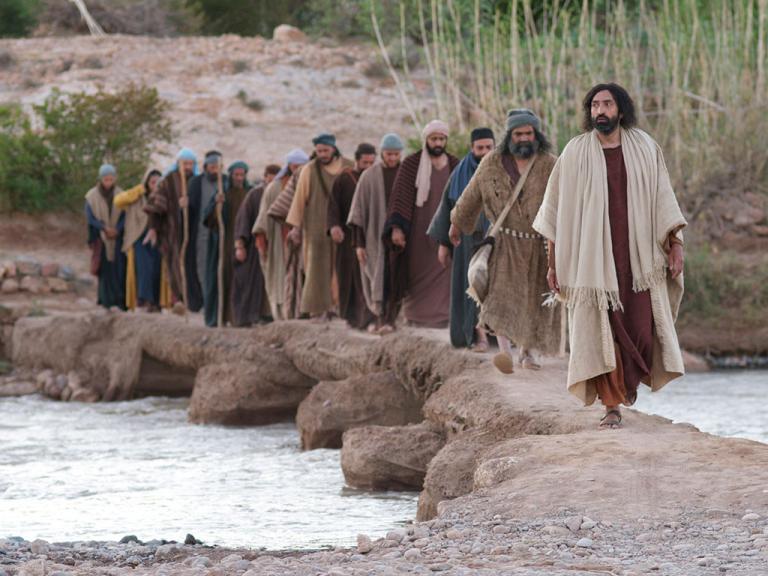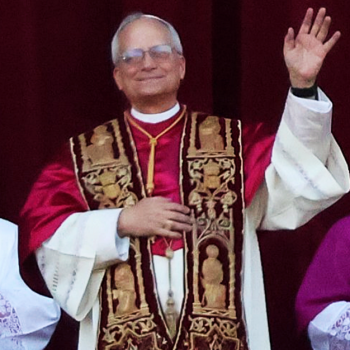Jesus chose twelve apostles to accompany him in his ministry, and one of them was the apostle John. Three of the four New Testament gospels, including the Gospel of John, do not reveal who wrote them. Plus, in the ancient world, titles often were not affixed to books. Rather, they were known by the first word in the book. Take the first and last books of the Bible; Genesis, the Greek translation of the Hebrew word bereshit, means “in the beginning,” and Revelation is the English translation of the Greek word apokalypsis, which means “revelation.” And we do learn from the New Testament gospels that three of Jesus’ twelve apostles were especially close to Jesus: Peter, James, and his younger brother John.
So, the Gospel of John does not inform who wrote it, and it did not originally have that title. Part of the reason for this could have been that all four gospels were not “written” but mostly “compiled” from oral tradition. Ancient communities excelled at creating oral tradition, so that it was very stable. It is because historians tell us that back then, at most only ten per cent of the population was literate. Thus, oral tradition actually was more meaningful to many people than written tradition was.
However, Christian tradition teaches that the apostle John was an important source for what is in this gospel. And this book tells repeatedly about an unnamed person called “the beloved (disciple).” Christian tradition says he may have been the apostle John. Why would he not identify himself if he was and if he was the main source of information in this gospel. Scholars tell us it may also have been for modesty sake.
Thomas, who also was one of Jesus’ twelve apostles, is an interesting figure in Christian tradition. Besides the naming of all twelve apostles in all four New Testament gospels, only the Gospel of John tells about Thomas speaking to Jesus. It records three incidents in which this occurred.
The first incident that involves Thomas speaking in the Gospel of John regarded the near end of Jesus’ itinerant ministry. Israel’s religious establishment was putting out messages about Jesus, telling people they would be excommunicated from Judaism if they said anything about Jesus being the promised Messiah of Israel (John 9.22: “put out of the synagogue”). Moreover, they had been trying to arrest Jesus (John 7.25-31).
Because that was not God’s timing for Jesus to be killed, he left Judea and went to the other side of the Jordan River to minister where his cousin, John the Baptist, had been baptizing earlier (John 10.39-42). Jesus then received word that his friend Lazarus of Bethany was ill. So he said to his disciples, “‘Let us go to Judea again.’ The disciples said to him, ‘Rabbi, the Jews were just now trying to stone you, and are you going there again?'” (John 11.7-8). Jesus then said he must minister while there is still time. We read, “Then Jesus told them plainly, ‘Lazarus is dead. For your sake I am glad I was not there, so that you may believe. But let us go to him.’ Thomas, who was called the Twin, said to his fellow disciples, ‘Let us also go, that we may die with him'” (vv. 14-16).
This statement by Thomas reveals that, even though he later doubted temporarily that Jesus had risen from the dead, Thomas was totally sold out to making Jesus Lord of his life. He would courageously go with Jesus to be killed. I won’t relate the rest of this story, about Jesus raising Lazarus from the dead, since it doesn’t relate to Thomas.
The second incident that involves Thomas speaking in the Gospel of John occurred at the Last Supper, which was during the Passover Festival (John 13-17). Jesus began his so-called Farewell Discourse to his eleven apostles by saying, “Do not let your hearts be troubled. Believe in God, believe also in me. In my Father’s house there are many dwelling places. If it were not so, would I have told you that I go to prepare a place for you? And if I go and prepare a place for you, I will come again and will take you to myself, so that where I am, there you may be also. And you know the way to the place where I am going” (John 14.1-4). Jesus meant he was going to go heaven to be with God there, thus anticipating his death, resurrection, and heavenly ascension.
But the apostles didn’t understand any of this. Thus, Thomas spoke up by replying, “‘Lord we do not know where you are going. How can we know the way?’ Jesus said to him, ‘I am the way, and the truth, and the life. No one comes to the Father except through me. If you know me, you will know my Father also. From now on you do know him and have seen him'” (John 14.5-7).What did Jesus mean by “seen him,” meaning seen the Father, who is God?
Jesus was about to answer that, although he already had taught them about it a short time ago, which itself is only in the Gospel of John as well. Jesus had said, “The Father and I are one” (John 10.30). Many Bible readers take this statement out of its context by claiming Jesus therein claimed to be God. Not so. He meant that he and the Father were one in purpose and work, which is what he was in effect saying in the previous verses, in vv. 25-29.
Then we read next, “The Jews took up stones again to stone him” (v. 31). In v. 32, Jesus asked why, and they replied in v. 33, “because you, though only a man, are making yourself God.” Jesus replied that he only claimed, “I am the God’s Son” (v. 36). But he soon explains clearly what he meant in v. 30 by saying, “the Father is in me and I am in the Father” (v. 38). Scholars call this The Mutual Indwelling. Jesus meaning of this entire narrative is that he and the Father are one in purpose and work because they indwell each other.
Going back to the discussion between Jesus and Thomas, in John 14, the apostle Philip enters it. We read, “Philip said to him, ‘Lord, show us the Father, and we will be satisfied.’ Jesus said to him, ‘Have I been with you all this time, Philip, and you still do not know me? Whoever has seen me has seen the Father. . . . Do you not believe that I am in the Father and the Father is in me? The words that I say to you I do not speak on my own; but the Father who dwells in me does his works. Believe me that I am in the Father and the Father is in me'” (John 14.8-11). Again, Jesus means metaphorically that they see the Father in him. Some Christian greatly misunderstand this like they do with, “The Father and I are one.” Here, they think Jesus claims to be God as well because the Father is God and Jesus claims to be the Father. Not at all. Even a taught Trinitarian knows that is wrong and therefore Docetic.
The third incident in the Gospel of John that involves Thomas speaking to Jesus was after Jesus arose from the dead. Jesus arose early on Sunday morning, and he appeared to his disciples that evening as they were gathered together, probably in the Upper Room where they had the Last Supper (John 20.19-23). Then we read, “But Thomas (who was called the Twin), one of the twelve, was not them when Jesus came. So the other disciples told him, ‘We have seen the Lord.’ But he said to them, ‘Unless I see the mark of the nails in his hands, and put my finger in the mark of the nails and my hand in his side, I will not believe'” (vv. 24-25). This apostle therefore became known in Christian tradition as Doubting Thomas.
Yet, there should be no misunderstanding here. Thomas did not say he no longer believed Jesus was Messiah and Lord. Rather, Thomas only meant that he would not believe Jesus had really risen from the dead unless he saw and felt the most compelling proof of it.
Thus, we read next, “A week later his disciples were again in the house, and Thomas was with them. Although the doors were shut, Jesus came and stood among them and said, ‘Peace be with you.’ Then he said to Thomas, ‘Put your finer here and see my hands. Reach out your hand and put it in my side. Do not doubt bue believe.’ Thomas answered him, ‘My Lord and my God!'” (John 20.26-28).
I believe those last words of Thomas, “My Lord and my God,” are the most misunderstood words in the entire Bible. Almost everyone, both regular Bible readers and New Testament scholars, believe Thomas therein identified Jesus as God. Not so. Thomas likely was recalling what Jesus had just taught him and Philip days ago about the Mutual Indwelling, that he and God the Father indwelt each other. Thus, Thomas meant that he now metaphorically saw God in Jesus.
Nevertheless, Thomas had lacked faith that Jesus had really risen from the dead. He had said that he needed the most compelling proof positive, of not only literally seeing the risen Jesus, but also even putting his finger through the holes in Jesus body that had been formed by crucifixion and his hand in the side of his body which had been the result of the Roman soldier’s spear piercing his heart to make sure he was dead.
And what did Jesus next say to Thomas? He said, “Have you believed because you have seen me? Blessed are those who have not seen and yet have come to believe” (John 20.29). That is what had happened to the apostle John on that first Easter morning. And this is little understood by Bible readers.
Jesus was entombed Friday afternoon and arose from the dead early Sunday morning. It was the Jews’ custom to wrap deceased human bodies with cloth and spices, if they could afford it, before laying the body to rest. And it was Jewish custom for women to sometimes attend the gravesite on the third day to add more spices to the body for further preservation before decay began to set in the fourth day. Some of Jesus’ female disciples therefore went to the Jesus’ tomb early that Sunday morning to do that very thing. But they discovered the Jesus’ body was missing from the tomb.
So, the Gospel of John informs that one of those women, Mary Magdalene, ran to the house where Peter and John were staying to tell them the body was missing (John 20.2). Peter and the beloved disciple, probably John, then ran to the tomb to learn that it was true. We read of this, “The two were running together, but the other disciple outran Peter and reached the tomb first. He bent down to look in and saw the linen wrappings lying there, but he did not go in. Then Simon Peter came, following him, and went into the tomb. He saw the linen wrappings lying there, and the cloth that had been on Jesus’ head, not lying with the linen wrappings but rolled up in a place by itself. Then the other disciple, who reached the tomb first, also went in, and he saw and believed, for as yet they did not understand the scripture that he must rise from the dead” (John 20.4-9). That scripture likely was Ps 10.16.
So, the beloved disciple, who was probably the apostle John, believed Jesus had risen from the dead merely by seeing the grave cloths. How did that cause him to believe? There are several reasons. First, Roman law made grave robbing a capital punishment, so that it was likely to happen. Second, no one, whether the gardener or a robber, would first remove the deceased body’s grave clothes and then remove the body from the tomb. Third, whoever would remove the body would not take the time, thus further risking being caught, to apparently neatly roll up the headcloth and separate the two. Carefully noticing this evidence caused the beloved disciples, probably John, to believe.
Thus, the beloved disciple, who probably was the apostle John, did not literally see the risen Jesus, nevertheless he believed. In contrast, the apostle Thomas would not believe in Jesus’ resurrection without literally seeing the risen Jesus. The Gospel of John has had such a tremendous impact on the history of Christianity.
But what about Thomas? There is strong Christian tradition that Thomas obeyed the risen Jesus’ admonition to the utmost, “Go therefore and make disciples of all nations” (Matthew 28.19). Tradition says Thomas ministered in Syria, perhaps in Egypt, and certainly way over in India. There is a story about Thomas encountering religionists worshiping their gods in a so-called “holy river” in India. He said to them that if he took that water from the river, which they regarded as holy because of their many gods, and threw the water up into the air, and the water droplets suspended in the air, would they believe in his Jesus. They said yes. So, Thomas threw water into the air, as the story goes, and it suspended in the air. They marveled and believed. They then gave up their idols by constructing a church building with stone walls, mortar, and their idols stuck in those walls. According to history, that building remained there for centuries.













